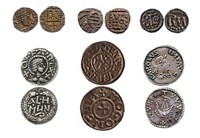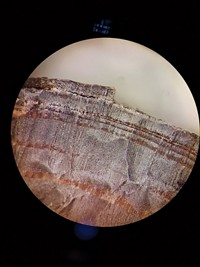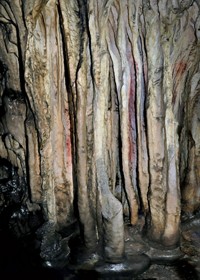Advertisement
Grab your lab coat. Let's get started
Welcome!
Welcome!
Create an account below to get 6 C&EN articles per month, receive newsletters and more - all free.
It seems this is your first time logging in online. Please enter the following information to continue.
As an ACS member you automatically get access to this site. All we need is few more details to create your reading experience.
Not you? Sign in with a different account.
Not you? Sign in with a different account.
ERROR 1
ERROR 1
ERROR 2
ERROR 2
ERROR 2
ERROR 2
ERROR 2
Password and Confirm password must match.
If you have an ACS member number, please enter it here so we can link this account to your membership. (optional)
ERROR 2
ACS values your privacy. By submitting your information, you are gaining access to C&EN and subscribing to our weekly newsletter. We use the information you provide to make your reading experience better, and we will never sell your data to third party members.
Art & Artifacts
Hafnium isotopes reveal origin of ancient Roman glass
Chromatography analysis indicates the prized, colorless glass was produced in Egypt
by Ariana Remmel
July 18, 2020
| A version of this story appeared in
Volume 98, Issue 28
Ancient Romans used glass to make everything from dining ware to colorful mosaics. But the Romans particularly prized a colorless, translucent glass they called “Alexandrian.” Its origin was an archaeological mystery, but research led by Gry Barfod, a geochemist at Aarhus University, shows that hafnium isotopes in Alexandrian samples reveal their ancient origin: Egypt (Sci. Rep. 2020, DOI: 10.1038/s41598-020-68089-w). Glass shards of different types collected from Gerasa—an ancient Roman city near modern-day Amman, Jordan—were analyzed by dissolution and ion-exchange chromatography for elemental analysis of strontium, neodymium, and hafnium. Though Sr and Nd isotopes have previously been used to study glass artifacts, their elemental signatures fail to distinguish Egyptian glass shards from those produced in other regions of the Mediterranean. But glass produced in Egypt shows a distinct 176Hf/177Hf signature because of minerals found in the sands of Nile sediments. This signature groups Alexandrian samples squarely among other glass types produced in Egypt. This research not only sheds light on ancient Roman trade practices but also shows that Hf could be useful for analyzing other human artifacts.





Join the conversation
Contact the reporter
Submit a Letter to the Editor for publication
Engage with us on Twitter